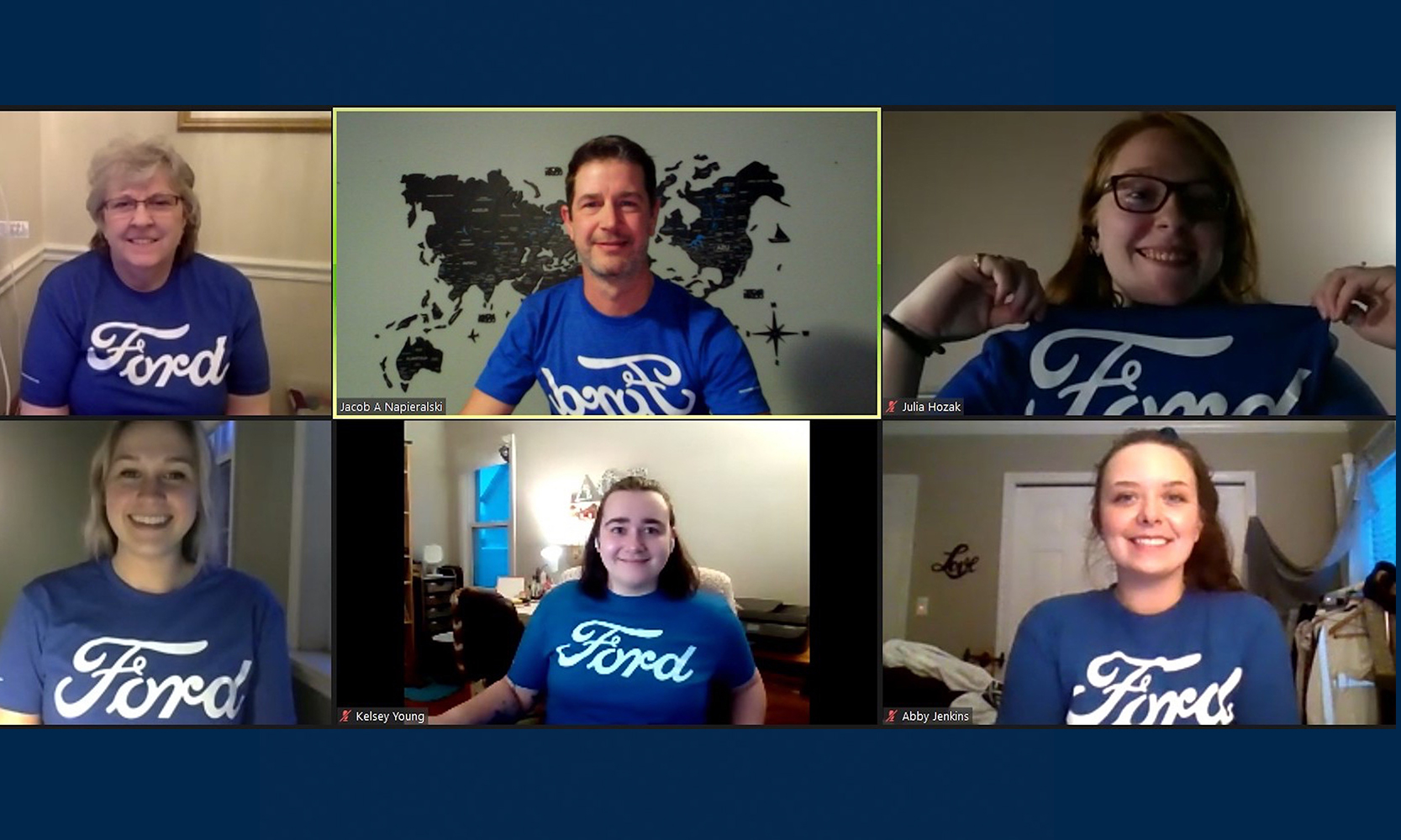
A group of UM-Dearborn students are creating a plan to help a Metro Detroit community see the future — or, more accurately, get a visual of it.
Five students in Geology Professor Jacob Napieralski’s Geographic Information System (GIS) capstone course are working with Dearborn city government, non-profit organizations and community groups creating digital maps to assist with the expansion of the city’s tree canopy, evaluate locations for city bike lanes and more.
“These students genuinely care and want to leave a footprint on their community before they graduate — it goes beyond a grade,” he says. “They are applying the knowledge they’ve gained at UM-Dearborn to create potential sustainable solutions. Yes, they want to gain experience. But they also want to help.”
Napieralski says the students have worked with Dearborn for previously funded projects like mapping data to help city organizers know where to best add safety measures like crosswalks. And thanks to the support from a $25,000 Ford College Community Challenge (Ford C3) grant, Napieralski’s students will keep the mapping momentum going for city-related planning projects. UM-Dearborn is one of seven universities across the nation selected for the award.
The Ford C3 funds will help students develop potential data platforms — for example, one idea is to create an app to help residents identify tree types and upload images of trees in public spaces — and give the undergraduates a research stipend.
“I am grateful for this grant and the opportunity it offers to expand upon the work we were doing,” says Geological Sciences major Julia Hozak. Urban and Regional Studies and Geological Sciences double major Gina Boyanowski.adds, “GIS combines my interest in the urban environment, urban design and my love of communicating with visual art. I’m excited to be a part of this effort.”
Napieralski says UM-Dearborn’s Office of Metropolitan Impact is heavily involved in moving the projects forward. OMI Director Tracy Hall and her team connect students with community partners, help students prepare for meetings, and continue to facilitate conversations when needed.
“We are a public institution and it is critical that we address issues of public concern. OMI is often behind-the-scenes establishing relationships to help mutually beneficial projects like these happen,” Hall says. “This is a really wonderful thing because it gives our students the opportunity to practice active citizenship. The grant allows students to support our city through Ford’s investment in its hometown at the university Ford founded.”
The student groups are in the early planning stage. Actively pushing forward, they meet via Zoom weekly to give updates, brainstorm ideas, and discuss next steps. In a remote meeting on a Wednesday evening in January, each shared their project focus.
Boyanowski wants to help with the implementation of the city's multi-modal transportation efforts. Through using GIS spatial analysis and/or creating interactive maps, she’ll help people visualize current and future projects and potential efficiencies. One idea is to map road construction timing with identified areas for bike lanes so efforts are streamlined.
Hozak and Environmental Science major Rebecca Zasadny are teaming up to look at ways to map Dearborn’s tree canopy, create a tree inventory, and identify how to best mark ideal tree planting locations. “GIS allows for a full visualization of urban areas and potential green areas as well. My focus on this project is to optimize areas in Dearborn that could benefit from tree planting and my hope is that this project can be a starting point in bringing nature closer to the residents.” The city is proud of its 30-year Arbor Day Foundation Tree City USA designation and continues to prioritize tree planting.
The team of Environmental Science major Abby Jenkins and Geological Sciences major Kelsey Young continue to seek data so they can digitally map and analyze flood hazards in the city to identify vulnerable areas. “I've always been interested in studying the impacts of environmental and geologic hazards on local communities — and GIS is an exceptional way to visualize and conduct a study,” says Young, who is also earning a GIS Certificate.
The students, working with city leaders, want to enhance neighborhoods across the city. But Napieralski says special focus will be on Dearborn’s Southend neighborhood, which is tucked between the Ford Rouge Factory and the city of Detroit.
Napieralski says the neighborhood is “literally on the other side of tracks” and isolated from the rest of the city of Dearborn because it’s surrounded by railways and industry. He remarked that pedestrian routes are so disconnected that there are no direct biking or walking paths to schools.
“It’s important to explore ways to provide opportunities. Residents in the Southend are economically distressed and have lower educational attainment compared to residents in other Dearborn neighborhoods,” he says. “We wanted to focus on mobility issues and public spaces — and would like to start there since it’s much needed.”
Napieralski, who serves as a mentor for these projects, says the process is student-driven with one of the Ford C3 grant’s goals being student leadership.
He says the seniors are ready for the challenge and they are planning ahead so they can have a lasting impact. Each team’s product will be in a format that can easily be handed over to the city or future upper-level GIS students and expanded and updated as information and project goals change.
“We believe in giving our students real-world experience so they are prepared when they graduate. But we also want them to understand the importance of the work,” Napieralski says. “It’s about improving the quality of life. It’s about having a long term impact. These students get that.”
###
In addition to the Ford C3 grant, these GIS projects are made possible by a variety of partnerships in the community and at UM-Dearborn. Beyond those mentioned in the story, partners include ACCESS, Friends of the Rouge, Environmental Interpretive Center, Dearborn City Council and Healthy Dearborn.




